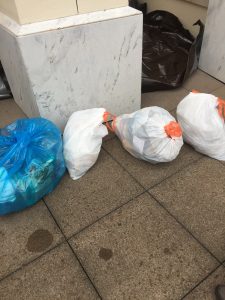
These are the four bags of garbage we were given; we only used the first three bags.
Our group was given four bags, but we only sorted through three bags. The first bag contained recyclable items, the second food/perishables, and the third paper/cardboard. Almost all of the items in the bag were recyclable or compostable and were sorted accordingly.
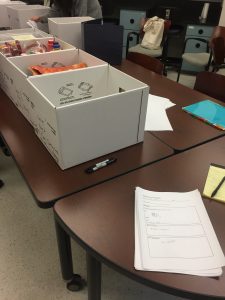
Boxes and papers in the lab where we organized the trash into categories.
We started out by opening one bag at a time, laying all the items out, putting the items into categories, describing each item, and bagging each item. Then we brought the items and the papers with the descriptions inside and weighed items that needed to be weighed and put them in boxes according to their category and their papers in a binder also according to category.
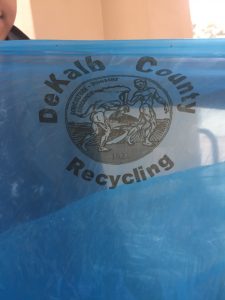
Recycling emblem on the first bag that contained recycling items.
A lot of the items we found indicated healthy, organic, fresh foods, and the way the garbage was bagged indicated an environmentally conscious household with likely a higher socioeconomic status.
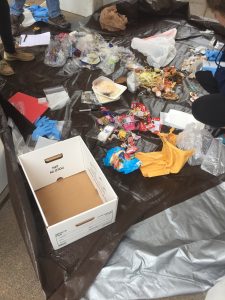
This is the sorting stage of the second bag of garbage that contained mostly compostable items.
There were interesting items thrown in with the compostable items bag such as a harmonica, tooth pics, cat pee/poop, and polaroid film, and this bag contained a large amount of coffee grounds.
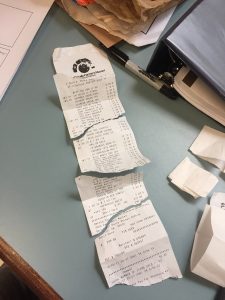
A receipt from the third bag that was pieced together to determine the total and the number of receipts in the bag.
The paper/cardboard bag told us a lot about this household; we could see that the household contained a man, a woman, and one child in grade school. The ads they received in the mail also indicated a higher socioeconomic status.